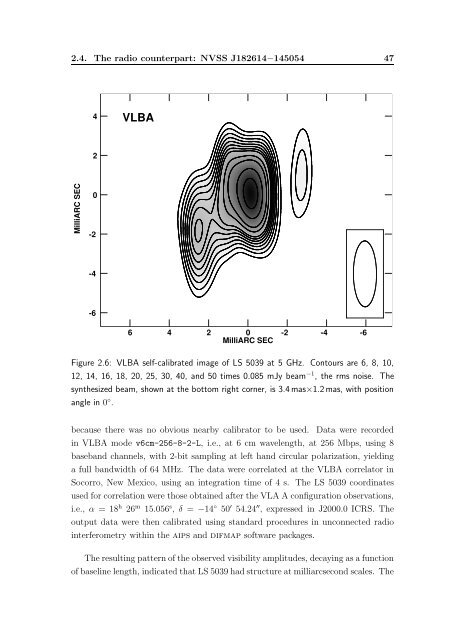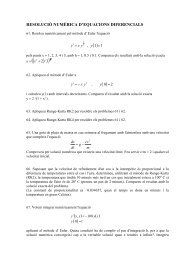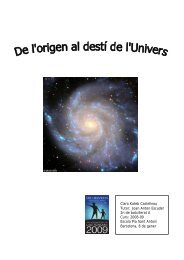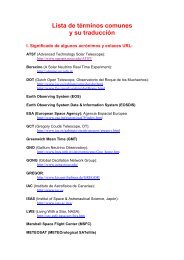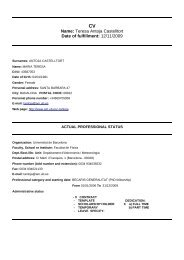Universitat de - Departament d'Astronomia i Meteorologia ...
Universitat de - Departament d'Astronomia i Meteorologia ...
Universitat de - Departament d'Astronomia i Meteorologia ...
You also want an ePaper? Increase the reach of your titles
YUMPU automatically turns print PDFs into web optimized ePapers that Google loves.
2.4. The radio counterpart: NVSS J182614−145054 47<br />
MilliARC SEC<br />
4<br />
2<br />
0<br />
-2<br />
-4<br />
-6<br />
VLBA<br />
6 4 2 0 -2 -4 -6<br />
MilliARC SEC<br />
Figure 2.6: VLBA self-calibrated image of LS 5039 at 5 GHz. Contours are 6, 8, 10,<br />
12, 14, 16, 18, 20, 25, 30, 40, and 50 times 0.085 mJy beam −1 , the rms noise. The<br />
synthesized beam, shown at the bottom right corner, is 3.4 mas×1.2 mas, with position<br />
angle in 0 ◦ .<br />
because there was no obvious nearby calibrator to be used. Data were recor<strong>de</strong>d<br />
in VLBA mo<strong>de</strong> v6cm-256-8-2-L, i.e., at 6 cm wavelength, at 256 Mbps, using 8<br />
baseband channels, with 2-bit sampling at left hand circular polarization, yielding<br />
a full bandwidth of 64 MHz. The data were correlated at the VLBA correlator in<br />
Socorro, New Mexico, using an integration time of 4 s. The LS 5039 coordinates<br />
used for correlation were those obtained after the VLA A configuration observations,<br />
i.e., α = 18 h 26 m 15.056 s , δ = −14 ◦ 50 ′ 54.24 ′′ , expressed in J2000.0 ICRS. The<br />
output data were then calibrated using standard procedures in unconnected radio<br />
interferometry within the aips and difmap software packages.<br />
The resulting pattern of the observed visibility amplitu<strong>de</strong>s, <strong>de</strong>caying as a function<br />
of baseline length, indicated that LS 5039 had structure at milliarcsecond scales. The


